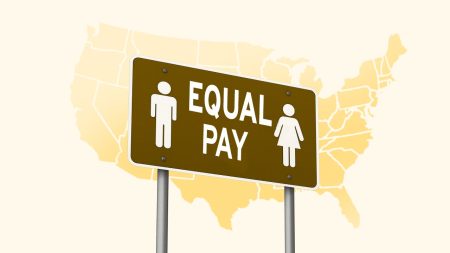Key takeaways
- Sellers have had the advantage in the housing market for several years, largely due to low levels of available homes.
- However, many experts see market conditions starting to shift in buyers’ favor.
- Whether conditions favor buyers or sellers may depend on individual local market dynamics.
Homebuyers, it seems, haven’t been able to catch a break. Market conditions have favored sellers for most of the past five years — sometimes dramatically so — but there are signs that the tide may finally be turning. Do these signs point toward a shift from a seller’s market to a buyer’s market? The answer may depend on where you look.
What defines a seller’s market?
Strong homebuyer demand coupled with too little supply is the basis for a seller’s market, in which home sellers have the upper hand and buyers must compete with each other for the limited inventory.
Sellers have had a distinct advantage in the housing market lately for a few reasons. First, there simply haven’t been many homes available to buy: After peaking at over 1.2 million in 2016, the inventory of homes for sale declined steadily through early 2020, and then plummeted in the post-COVID period, when home sales far outpaced supply, according to data from Altos Research. Inventory bottomed out under 250,000 units in early 2022.
This low inventory was due in part to homes selling more quickly than usual; according to Redfin, the median number of days on market dipped as low as 19 in the spring of 2022. Meanwhile, demographic trends suggested that demand was increasing and was likely to grow even stronger in the next few years. In fact, data from John Burns Research shows that over 13,000 people are now reaching the prime homebuying age of 35 every day, and that this trend will continue for at least the next decade.
Mortgage rates and home prices
Rising home prices are another attribute of a seller’s market. Typically, high prices make affordability a challenge for prospective homebuyers. But in recent years, as the Federal Reserve drastically reduced interest rates to prevent a COVID-driven economic meltdown, mortgage rates dipped to historic lows — Bankrate data shows that the average 30-year fixed rate in 2021 was just 3.15 percent. This phenomenon made these more expensive homes relatively affordable.
But the Fed reversed course in mid-2022, dramatically raising interest rates in an effort to get inflation under control. By 2023, the average 30-year fixed rate had shot up to 7.0 percent, more than doubling in a few short months.
This created two problems for homebuyers: First, it made affordability considerably worse — homes were still expensive, and now financing was twice as expensive as it had been. Second, millions of homeowners had refinanced into those much lower mortgage rates and now simply couldn’t afford to sell their home and buy a new one with a much pricier loan. So these owners opted to not list their home, making the supply and demand imbalance even more pronounced.
Prices, meanwhile, continued to rise, increasing by almost 22 percent from March 2021 to March 2025 per Redfin data. Unsurprisingly, this combination of low inventory, high prices and weakening affordability caused existing-home sales to decline dramatically. National Association of Realtors data shows that the total rate of annual existing-home sales (not new-construction homes) dropped from about 6 million to about 4 million in the same time period.
And this, interestingly enough, is the reason we might be seeing the market start to turn in favor of buyers. The homes that do sell are taking longer to find a buyer, and sellers must often lower their price in order to find one.
Is a buyer’s market around the corner?
Fundamentally (and somewhat obviously), market conditions in a buyer’s market are the opposite of those in a seller’s market. There’s more than enough supply to meet demand; properties take longer to sell; and price appreciation is modest, or prices are actually declining.
We’re seeing buyer-friendly shifts of homes sitting on the market longer and sellers lowering prices.
— Danielle Hale
Chief Economist, Realtor.com
Danielle Hale, Realtor.com’s chief economist, thinks that things are trending in a favorable way for buyers — but there’s still a way to go before we see a complete reversal. “One of the key projections from our 2025 Housing Forecast is that 2025 would be the year where we tip from a seller’s market into balanced market territory nationally, with months supply, or the balance between inventory and sales, being the key marker,” she said. “I consider less than four months supply to be a seller’s market, four to six to be a balanced market, and above six to be a buyer’s market. This is significant because the last time we were at a ‘balanced’ housing market by this measure was all the way back in 2016.”
Local market trends can vary
“When for-sale home inventory is rising, as we’ve seen in the data recently in the vast majority of markets, buyers have more options,” Hale points out. “When this is the case, we often see that buyers have more market power.” However, even when it’s not the case, “we’re seeing buyer-friendly shifts of homes sitting on the market for longer and more sellers lowering asking prices.”
Mike Simonsen, president of Altos Research, calls today’s market “bifurcated,” noting that even though Altos sees national inventory up 31 percent from 2024, “there’s still very constrained inventory in the Midwest — especially the Rust Belt — and the Northeast.” Simonsen also noted some market aberrations: “California has 50 percent more unsold inventory than last year; Connecticut, on the other hand, has fewer listings than it did a year ago.” Overall, Simonsen believes the housing market is still “slightly skewed toward sellers,” but has probably crossed over to a buyer’s market in states with higher inventory levels, citing Texas, Florida, Arizona, Colorado and Georgia.
Where inventory is up, buyers have more options and slightly more bargaining power.
— Orphe Divounguy
Senior Economist, Zillow
Zillow research seems to be largely aligned with Altos, as its March and April Market Heat Index favored sellers — ever so slightly — after being in neutral territory for the prior eight months. Zillow also shows buyers have an advantage in Southern states along the Gulf Coast, while sellers have the upper hand in the Northeast and parts of coastal California, where inventory remains constrained. Zillow senior economist Orphe Divounguy says that, while the national market may be in seller’s territory, potential buyers had 19 percent more options to choose from in March than a year ago, and sellers cut prices on a record-high 23.5 percent of Zillow listings. “Where inventory is up, buyers have more options and slightly more bargaining power.”
Bottom line: ‘A more balanced state’
The consensus among these economists is that whether it’s a buyer’s market or a seller’s market depends heavily on where you happen to be located. Connecticut, where supply has actually declined since last year, appears to still be a strong seller’s market, as do many of its neighboring states in the Northeast. Florida, on the other hand, where inventory exceeds pre-pandemic levels, tilts strongly in favor of the homebuyer, as do some other Gulf Coast states. And even within those states, the buyer/seller balance can shift from one market to another.
For now, it looks like the housing market is trending toward a more balanced state — call it equilibrium — with a chance of becoming a buyer’s market over time. But for now, Hale sums things up this way: “Home prices are still high, mortgage rates are at the mid-to-higher end of their recent range, and many markets still have fewer homes for sale than they did in the pre-pandemic period. So I understand if buyers still feel like it’s challenging. But it’s important for those who want to buy to know that they are starting to get back some market power and may have more room to negotiate with sellers than they have in the past.”
Read the full article here









